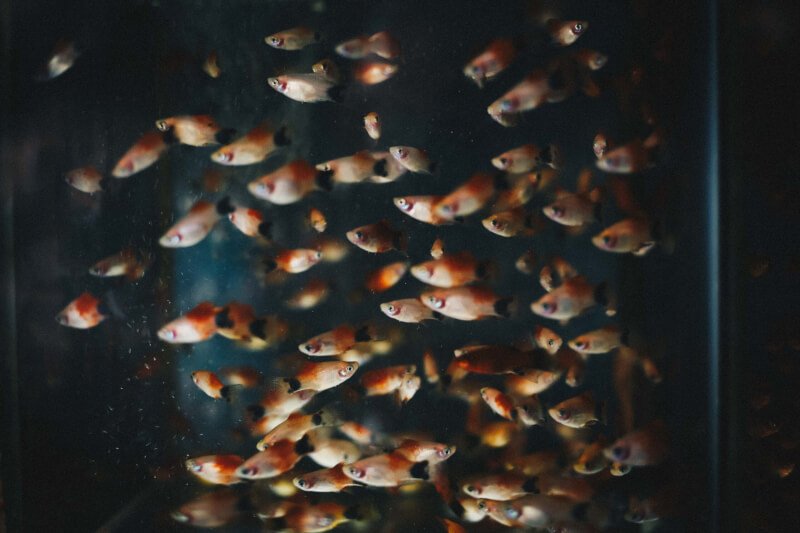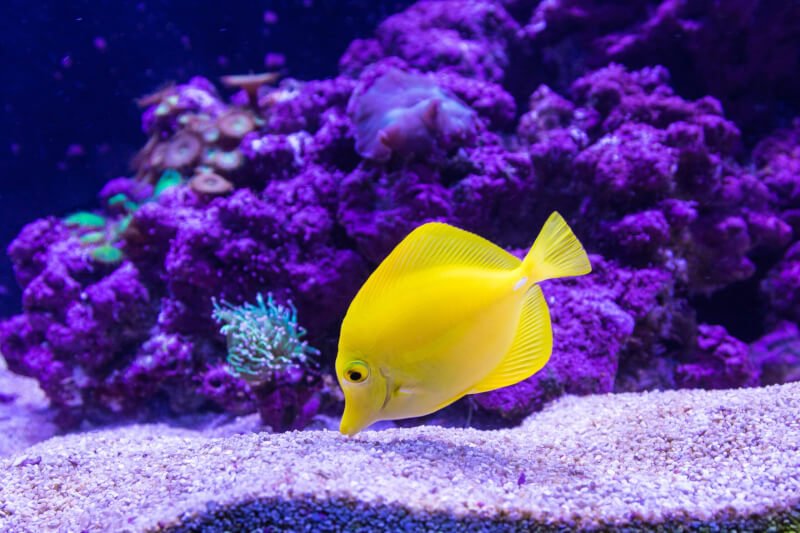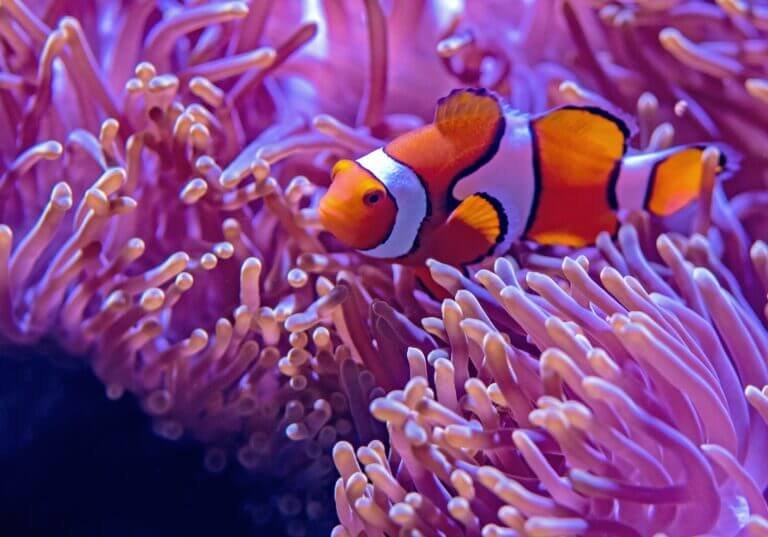Maintaining a clean and healthy environment for your aquatic companions is crucial, but the question of how frequently one should clean a fish tank can be confusing. As an owner, it is essential to strike a balance between cleanliness and maintaining the delicate ecosystem within the tank. From understanding the type of fish you have to monitoring water quality, this article aims to provide valuable insights to help you determine the ideal cleaning schedule for your fish tank.
Factors to Consider
Size of the Fish Tank
The size of your fish tank is an important factor to consider when determining the cleaning requirements. Smaller tanks tend to accumulate waste and toxins more quickly compared to larger tanks. It is generally recommended to get a tank that is appropriate for the number and size of fish you plan to keep, as a larger tank can hold more water volume and provide better filtration.
Ready for Cat Trivia?
Test your knowledge about cats!

Number and Size of Fish
The number and size of fish in your tank can impact the frequency of cleaning. More fish in a tank means more waste, and therefore more frequent cleaning is needed. Additionally, larger fish tend to produce more waste compared to smaller fish. It’s important to consider the bio-load of your fish and ensure that your tank is not overcrowded, as this can lead to poor water quality.
Type of Filtration System
The type of filtration system you have in your fish tank plays a crucial role in maintaining water quality. There are three main types of filtration systems – mechanical, biological, and chemical. Mechanical filtration removes physical debris, biological filtration breaks down harmful substances, and chemical filtration removes impurities through the use of activated carbon or other chemical media. The effectiveness of your filtration system will determine the frequency of cleaning required.
Signs that Your Fish Tank Needs Cleaning
Cloudy Water
Cloudy water is one of the most obvious signs that your fish tank is in need of cleaning. Cloudiness can be caused by a variety of factors, including excess waste, overfeeding, or bacterial blooms. If your water appears hazy or milky instead of clear, it’s time to take action and clean your tank.
Algae Growth
The presence of excessive algae growth in your fish tank is another indication that cleaning is necessary. Algae can thrive in an environment with excess nutrients, such as uneaten food or fish waste. If you notice a green, brown, or slimy coating on the glass, decorations, or plants in your tank, it’s time to clean up and prevent further algae growth.
Foul Odor
A foul odor emanating from your fish tank is a clear sign that maintenance is overdue. The accumulation of waste and decaying organic matter can cause a strong and unpleasant smell. It is important to address the odor promptly, as it not only indicates poor water quality but can also be harmful to your fish.

Regular Maintenance Tasks
Partial Water Changes
Regular partial water changes are essential to maintain a healthy fish tank environment. During a partial water change, a percentage of the tank water is siphoned off and replaced with fresh, treated water. This helps remove toxins, waste, and excess nutrients that can compromise water quality. The frequency of partial water changes may vary depending on the size of your tank, number of fish, and filtration system.
Gravel Vacuuming
Gravel vacuuming is an important task to remove debris and waste that settle on the tank’s substrate. Using a siphon or a gravel vacuum, gently stir and siphon the gravel to extract any accumulated waste. Regular gravel vacuuming helps prevent the buildup of harmful substances and keeps the substrate clean, enhancing the overall cleanliness of your fish tank.
Cleaning the Glass and Decorations
Cleaning the glass and decorations in your fish tank not only improves its aesthetic appeal but also removes algae, bacteria, and other debris. Use a non-abrasive aquarium-safe sponge or brush to gently scrub the glass and decorations. Avoid using harsh chemicals or cleaning agents that may be harmful to your fish. Regular cleaning of the glass and decorations will keep them looking vibrant and maintain a healthy environment for your fish.
Frequency of Cleaning
Fish Tank Cycle
The cycling process of a fish tank plays a significant role in determining the frequency of cleaning. During the initial cycling phase, beneficial bacteria establish themselves in the tank and establish a balanced ecosystem. It is crucial to monitor the water parameters during this phase and avoid excessive cleaning, as it can disrupt the cycling process. Once the tank is fully cycled, regular cleaning can be implemented based on the specific needs of your fish tank.
Type of Fish
Different species of fish have varying levels of waste output and feeding habits, which can impact the cleaning frequency. Some fish produce more waste than others, leading to a faster accumulation of toxins in the water. Research the specific requirements of the fish species you have and adjust your cleaning routine accordingly.
Presence of Live Plants
If your fish tank has live plants, you’ll need to consider their care and maintenance when determining the cleaning frequency. Live plants help absorb excess nutrients and provide additional filtration, reducing the need for frequent cleaning. However, they can also accumulate debris and require proper pruning and maintenance. Consider the balance between the presence of live plants and their impact on the tank’s cleanliness when establishing your cleaning routine.

Weekly Cleaning Routine
Partial Water Change
Performing a partial water change on a weekly basis is an essential part of maintaining a clean and healthy fish tank. Aim to change approximately 10-20% of the water volume, depending on the specific needs of your tank. This regular water change helps dilute toxins, remove excess nutrients, and promote optimal water quality for your fish.
Gravel Vacuuming
Alongside the weekly water change, it is advisable to perform a weekly gravel vacuuming to remove accumulated waste and debris from the substrate. Gently vacuum the gravel, ensuring not to disturb the beneficial bacteria colonies that reside within it. By consistently removing waste from the substrate, you can prevent the buildup of harmful substances and maintain better water quality.
Glass and Decoration Cleaning
Weekly glass and decoration cleaning help to keep your fish tank looking pristine and improve the overall health of your fish. Use an aquarium-safe sponge or brush to gently scrub the glass and decorations, removing any algae or debris. Regular cleaning prevents stubborn algae growth and maintains a visually appealing environment for both you and your fish.
Monthly Cleaning Routine
Deep Cleaning of Filter
On a monthly basis, it’s crucial to perform a deep cleaning of your filter to ensure its effectiveness. Follow the manufacturer’s instructions for your specific filter type to disassemble and clean each component properly. Rinse the filter media under freshwater to remove accumulated debris and promote optimal filtration.
Replacing Filter Media
Alongside the deep cleaning of the filter, it is recommended to replace certain filter media on a monthly basis. Over time, filter media can become clogged and lose effectiveness, leading to poor water quality. Replace the filter cartridges, sponges, or activated carbon as directed by the manufacturer to maintain efficient filtration.
Inspecting Equipment
During your monthly cleaning routine, take the time to inspect all the equipment in your fish tank. Check for signs of wear or damage and ensure everything is functioning properly. Pay particular attention to the heater, thermometer, air pump, and any other equipment that is essential for maintaining a stable and healthy environment. Replacing or repairing faulty equipment promptly will prevent potential problems in the future.

Common Mistakes to Avoid
Overcleaning the Tank
While regular cleaning is vital, it is equally important to avoid overcleaning your fish tank. Overcleaning can disrupt the beneficial bacteria colonies and cause instability in the tank’s ecosystem. Stick to the recommended cleaning routine and monitor the water parameters regularly to ensure a balanced and healthy environment for your fish.
Using Chemicals
Using harsh chemicals or cleaning agents in your fish tank can be detrimental to the health of your fish. These chemicals can disrupt the delicate balance of the aquarium and harm the beneficial bacteria. Opt for aquarium-safe cleaning products or natural alternatives to maintain a safe and healthy environment for your fish.
Neglecting Water Testing
Regular water testing is essential to monitor the water quality and ensure the health of your fish. Neglecting water testing can lead to imbalances in the tank, resulting in poor fish health and compromised water quality. Invest in a reliable water testing kit and perform regular tests to stay proactive in maintaining optimal water parameters.
Conclusion
Keeping your fish tank clean is a crucial part of maintaining healthy fish and a thriving aquatic ecosystem. By considering factors such as the size of your tank, the number and size of fish, and the type of filtration system, you can establish an appropriate cleaning routine. Regular maintenance tasks like partial water changes, gravel vacuuming, and glass and decoration cleaning help to prevent cloudy water, algae growth, and foul odors. The frequency of cleaning depends on the fish tank cycle, the type of fish, and the presence of live plants. Implementing a weekly and monthly cleaning routine, while avoiding common mistakes like overcleaning and using chemicals, will ensure a clean and safe environment for your fish. With proper care and regular maintenance, your fish tank will provide an enjoyable and beautiful habitat for your aquatic companions.



